Aluminum–Titanium Alloy Back Contact Reducing Production Cost of Silicon Thin-Film Solar Cells
Abstract
:1. Introduction
2. Experimental Details
3. Results and Discussion
4. Conclusions
Acknowledgments
Author Contributions
Conflicts of Interest
References
- Liu, H.; Huang, Q.; Hou, G.; Jiao, B.; Wang, G.; Zhang, W.; Zhang, D.; Zhao, Y.; Zhang, X. Cost-effective hollow honeycomb textured back reflector for flexible thin film solar cells. Sol. Energy Mater. Sol. Cells 2016, 155, 128–133. [Google Scholar] [CrossRef]
- Cashmore, J.S.; Apolloni, M.; Braga, A.; Caglar, O.; Cervetto, V.; Fenner, Y.; Goldbach-Aschemann, S.; Goury, C.; Hötzel, J.E.; Iwahashi, T.; et al. Improved conversion efficiencies of thin-film silicon tandem (MICROMORPH™) photovoltaic modules. Sol. Energy Mater. Sol. Cells 2016, 144, 84–95. [Google Scholar] [CrossRef]
- Jung, K.H.; Yun, S.J.; Lee, S.H.; Lee, Y.J.; Lee, K.S.; Lim, J.W.; Kim, K.B.; Kim, M.; Schropp, R.E.I. Double-layered Ag–Al back reflector on stainless steel substrate for a-Si:H thin film solar cells. Sol. Energy Mater. Sol. Cells 2016, 145, 368–374. [Google Scholar]
- Green, M.A. Silicon solar cells: Evolution, high-efficiency design and efficiency enhancements. Semicond. Sci. Technol. 1993, 8, 1–12. [Google Scholar] [CrossRef]
- Cho, J.S.; Yoo, J.; Park, J.H.; Shin, K.; Yoon, K.H. Fabrication of dc sputtered Ag/Al:Si bilayers with improved optical reflectance. Thin Solid Film 2013, 529, 45–49. [Google Scholar] [CrossRef]
- Palanchoke, U.; Kurz, H.; Noriega, R.; Arabi, S.; Jovanov, V.; Magnus, P.; Aftab, H.; Salleo, A.; Stiebig, H.; Knipp, D. Tuning the plasmonic absorption of metal reflectors by zinc oxide nano particles: Application in thin film solar cells. Nano Energy 2014, 6, 167–172. [Google Scholar] [CrossRef]
- Kim, M.; Kim, K.B.; Lee, D.; Lee, S.N.; Lee, J.M. Effects of rapid thermal annealing for E-beam evaporated Ag films on stainless steel substrates. Surf. Coat. Technol. 2015, 278, 18–24. [Google Scholar] [CrossRef]
- Kawamura, M.; Zhang, Z.; Kiyono, R.; Abe, Y. Thermal stability and electrical properties of Ag–Ti films and Ti/Ag/Ti films prepared by sputtering. Vacuum 2013, 87, 222–226. [Google Scholar] [CrossRef]
- Sugawara, K.; Kawamura, M.; Abe, Y.; Sasaki, K. Comparison of the agglomeration behavior of Ag(Al) films and Ag(Au) films. Microelectron. Eng. 2007, 84, 2476–2480. [Google Scholar] [CrossRef]
- Wang, G.H.; Shi, C.Y.; Zhao, L.; Yan, B.J.; Wang, G.; Chen, J.W.; Li, Z.C.; Diao, H.W.; Wang, W.J. Improved aluminum-doped ZnO/metal back reflector for p-i-n amorphous silicon germanium thin film solar cells. Thin Solid Films 2013, 534, 591–593. [Google Scholar] [CrossRef]
- Mondolfo, L.F. Aluminium Alloys: Structure and Properties; Butterworths: London, UK, 1976. [Google Scholar]
- Auchet, J.; Bretonet, J.L. Experimental measurement of resistivity of aluminium based liquid alloys. Rev. Int. Hautes Temper. Refract. 1990, 26, 181–192. [Google Scholar]
- Johnson, B.J.; Capano, M.A. The effect of titanium on Al–Ti contacts to p-type 4H-SiC. Solid-State Electron. 2003, 47, 1437–1441. [Google Scholar] [CrossRef]
- Dobos, L.; Pécz, B.; Tóth, L.; Horváth, Z.J.; Horváth, Z.E.; Tóth, A.L.; Poisson, M.A. Annealed Ti/Cr/Al contacts on n-GaN. Vacuum 2014, 100, 46–49. [Google Scholar] [CrossRef]
- Schroder, D.K. Semiconductor Material and Device Characterization, 2nd ed.; Wiley: New York, NY, USA, 1998. [Google Scholar]
- Foresi, J.S.; Moustakas, T.D. Metal contacts to gallium nitride. Appl. Phys. Lett. 1993, 62, 2859–2861. [Google Scholar] [CrossRef]
- Sawdai, D.; Pavlidis, D.; Cui, D. Enhanced transmission line model structures for accurate resistance evaluation of small-size contacts and for more reliable fabrication. IEEE Trans. Electron Device 1999, 46, 1302–1311. [Google Scholar] [CrossRef]
- Hsu, F.H.; Wang, N.F.; Tsai, Y.Z.; Chuang, M.C.; Cheng, Y.S.; Houng, M.P. Study of working pressure on the optoelectrical properties of Al–Y codoped ZnO thin-film deposited using DC magnetron sputtering for solar cell applications. Appl. Surf. Sci. 2013, 280, 104–108. [Google Scholar] [CrossRef]
- Brillson, L.J.; Lu, Y. ZnO Schottky barriers and Ohmic contacts. J. Appl. Phys. 2011, 109. [Google Scholar] [CrossRef]
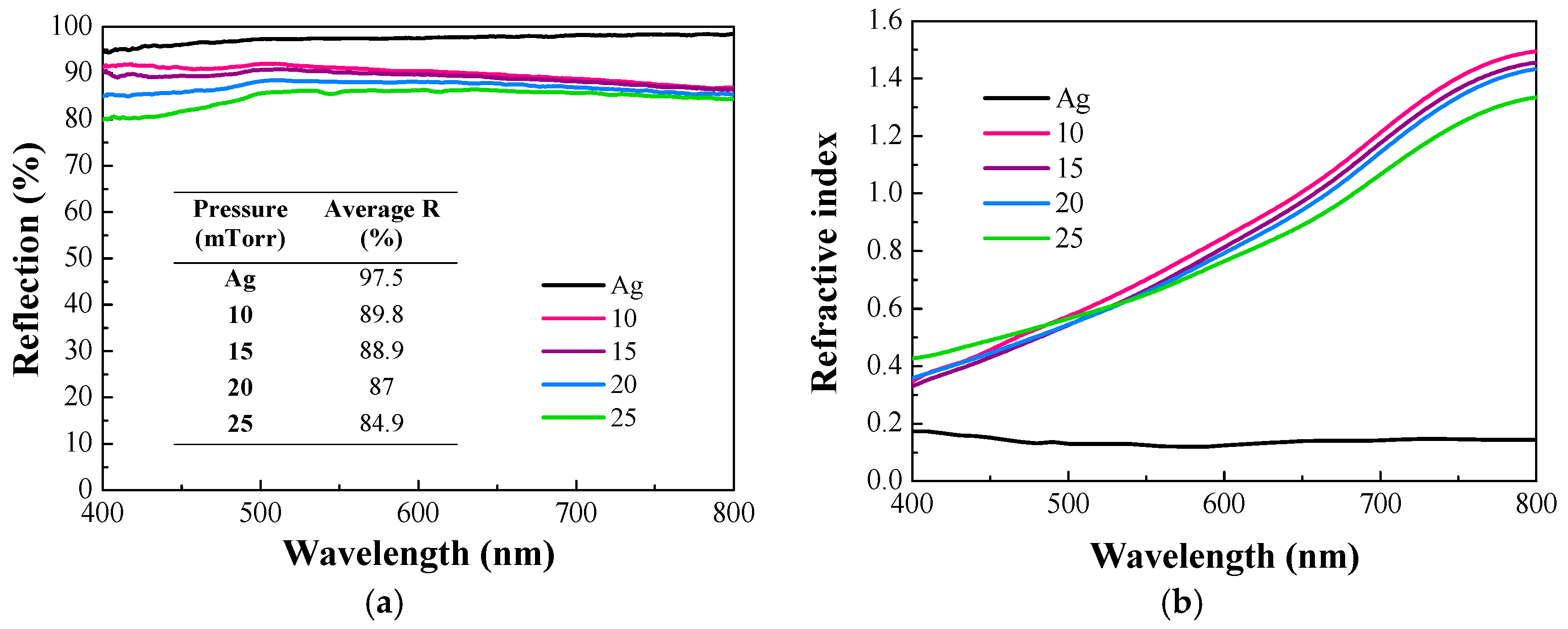
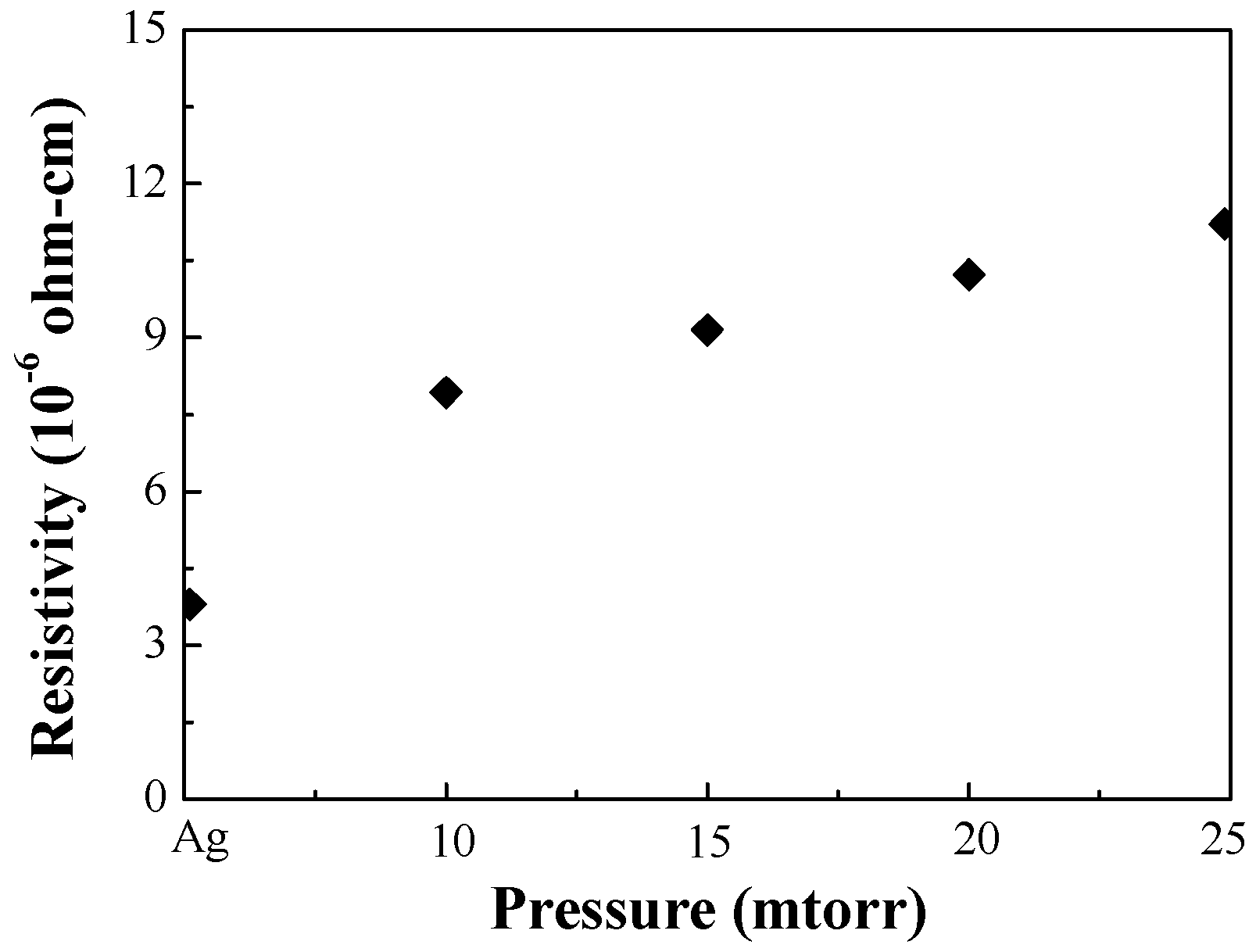
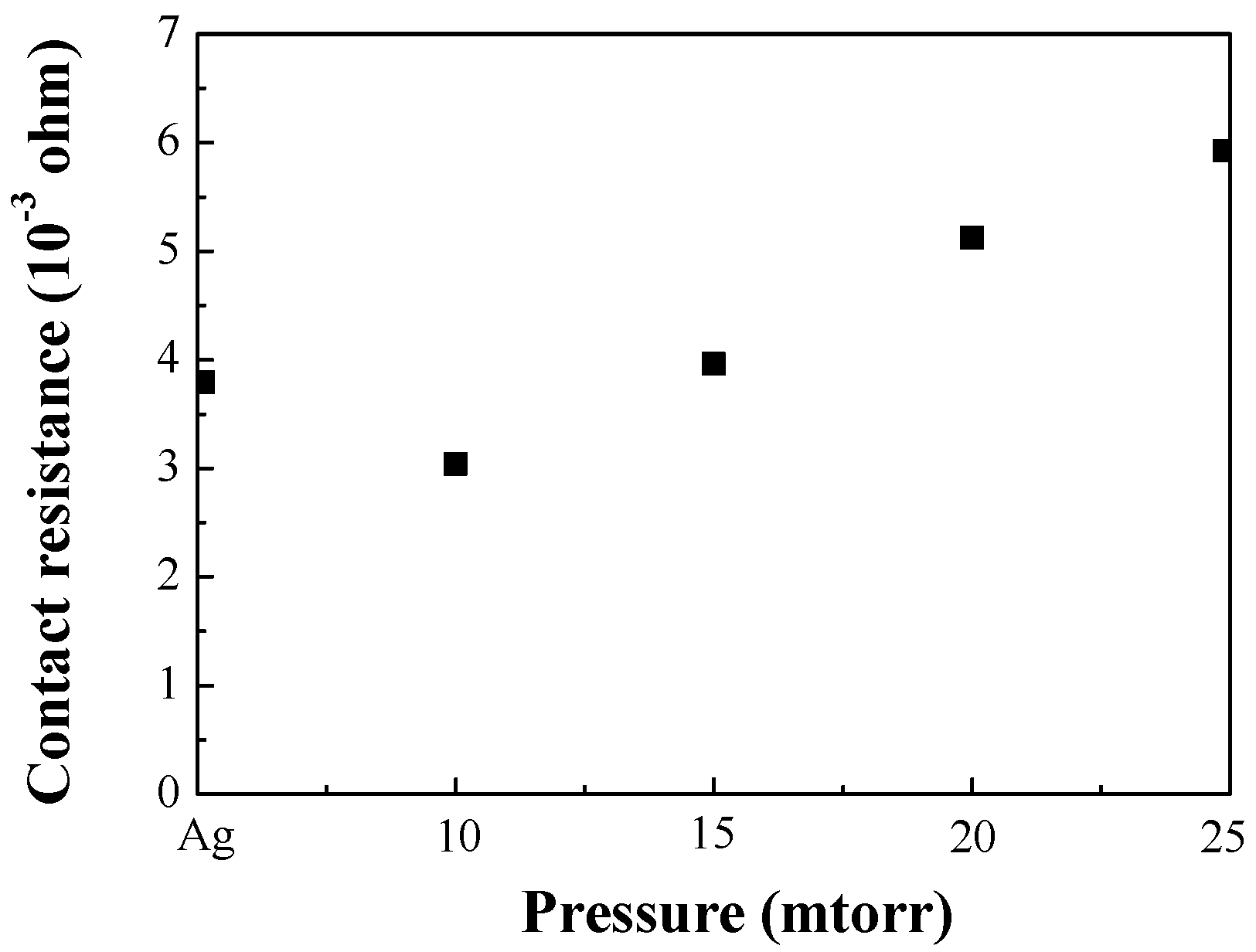
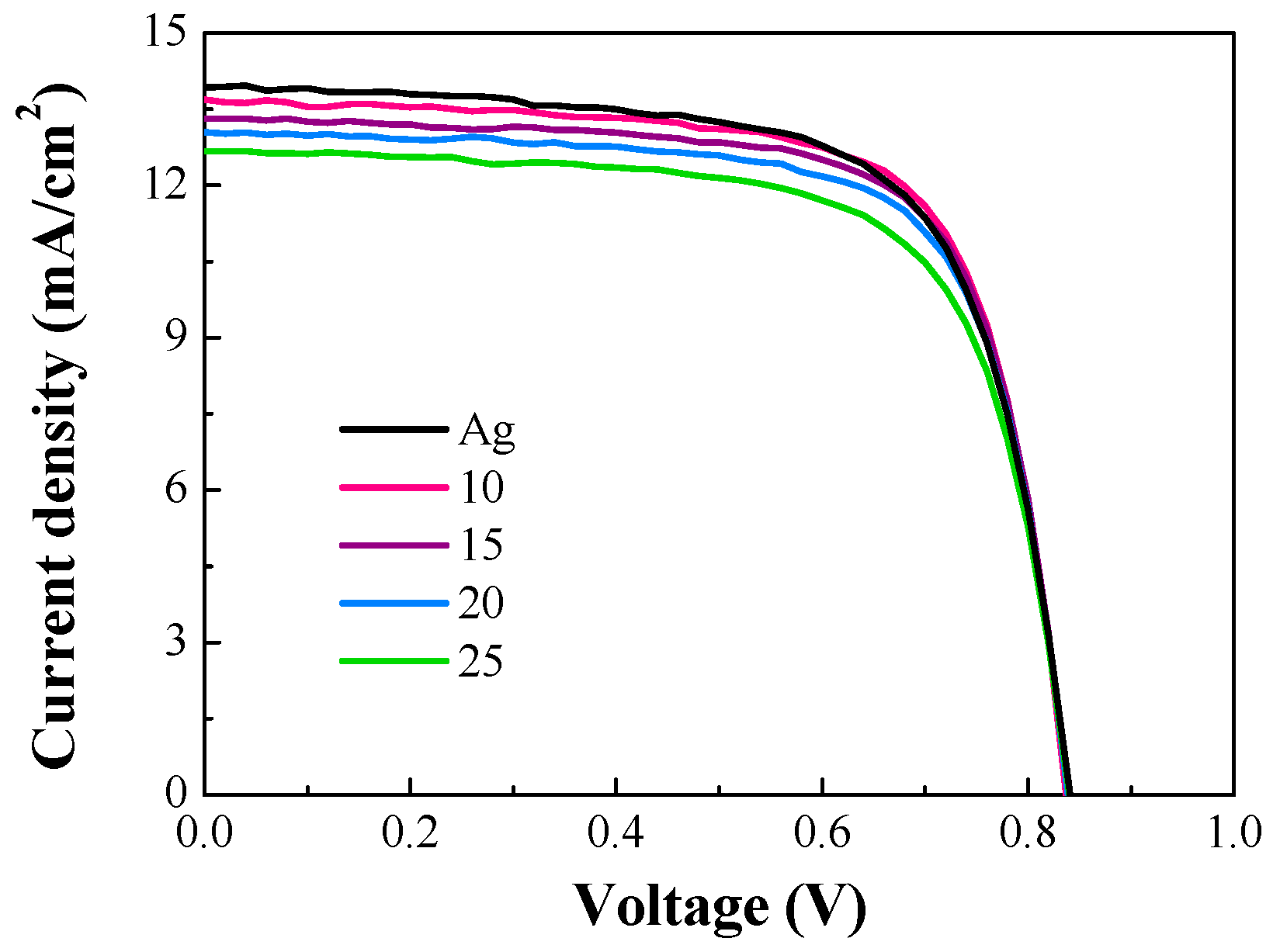
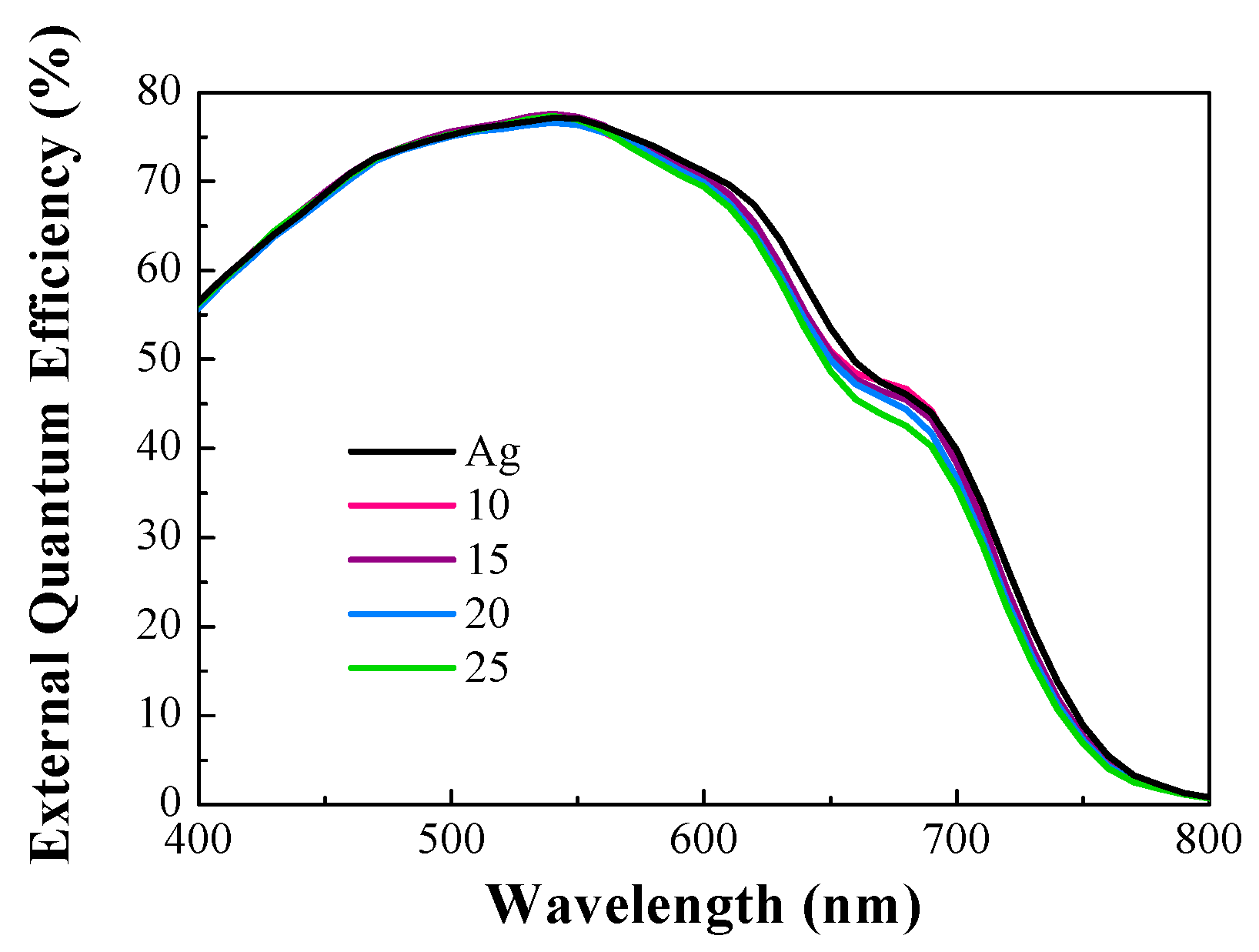
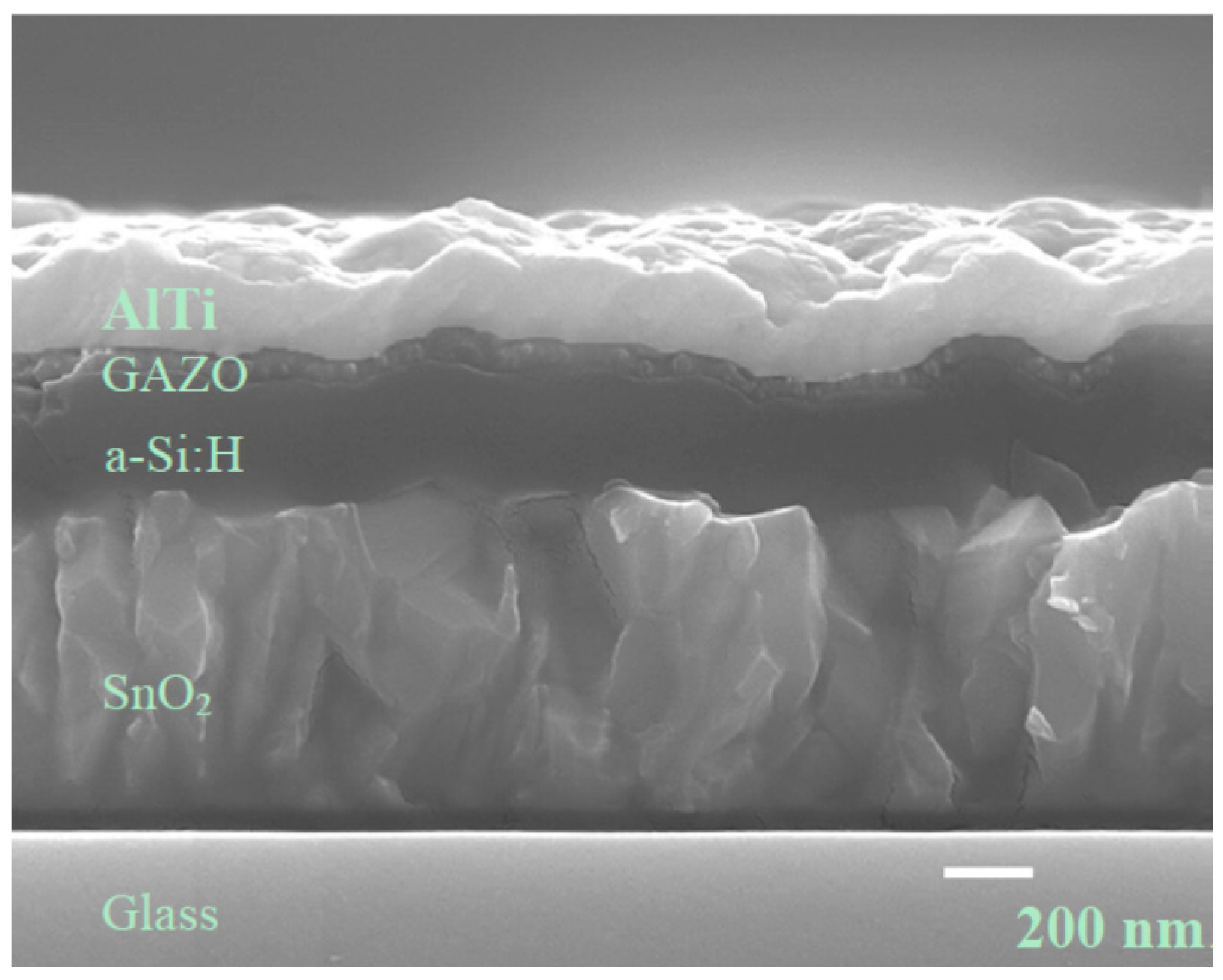
| Pressure (mTorr) | Voc (V) | Jsc (mA/cm2) | FF | η (%) | Roc (Ω) |
|---|---|---|---|---|---|
| Ag | 0.84 | 13.93 | 0.68 | 8.03 | 106.0 |
| 10 | 0.84 | 13.70 | 0.71 | 8.15 | 74.0 |
| 15 | 0.84 | 13.31 | 0.71 | 7.99 | 82.3 |
| 20 | 0.84 | 13.05 | 0.71 | 7.82 | 88.4 |
| 25 | 0.84 | 12.68 | 0.69 | 7.38 | 99.1 |
© 2016 by the authors; licensee MDPI, Basel, Switzerland. This article is an open access article distributed under the terms and conditions of the Creative Commons Attribution (CC-BY) license (http://creativecommons.org/licenses/by/4.0/).
Share and Cite
Wu, H.-Y.; Hsu, C.-H.; Lien, S.-Y.; Jiang, Y.-L. Aluminum–Titanium Alloy Back Contact Reducing Production Cost of Silicon Thin-Film Solar Cells. Energies 2016, 9, 975. https://doi.org/10.3390/en9110975
Wu H-Y, Hsu C-H, Lien S-Y, Jiang Y-L. Aluminum–Titanium Alloy Back Contact Reducing Production Cost of Silicon Thin-Film Solar Cells. Energies. 2016; 9(11):975. https://doi.org/10.3390/en9110975
Chicago/Turabian StyleWu, Hsin-Yu, Chia-Hsun Hsu, Shui-Yang Lien, and Yeu-Long Jiang. 2016. "Aluminum–Titanium Alloy Back Contact Reducing Production Cost of Silicon Thin-Film Solar Cells" Energies 9, no. 11: 975. https://doi.org/10.3390/en9110975
APA StyleWu, H.-Y., Hsu, C.-H., Lien, S.-Y., & Jiang, Y.-L. (2016). Aluminum–Titanium Alloy Back Contact Reducing Production Cost of Silicon Thin-Film Solar Cells. Energies, 9(11), 975. https://doi.org/10.3390/en9110975








